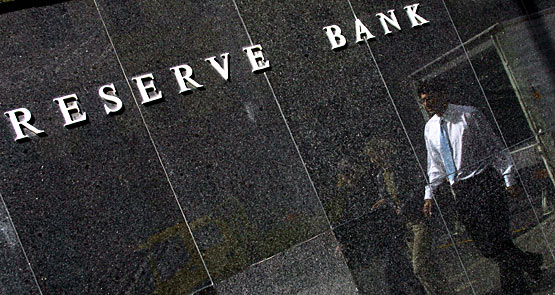
RBA’s rocky hard place. Ten days ago, Bank of Japan governor Haruhiko Kuroda told Japanese parliament he was “not seriously considering” a move to negative interest rates as part of any new plan to try to drag the sluggish Japanese economy out from its deflationary, low-growth rut and prepare for the next increase in the country’s consumption tax in 2017. But after last Friday’s five-to-four vote by the central bank’s board, we now know he changed his mind very quickly, and, in doing so, shocked world markets (and central banks).
The decision triggered a surge in sharemarkets and bonds. The yield on the Japanese 10-year bond collapsed by 55% to just 0.10% in less than a day, and US and German bonds were stronger as investors sought havens where some interest is paid. Analysts now reckon US$5 trillion worth of bonds of all types are now carrying negative yields. These securities range from Japanese, German, Swiss, Swedish and Danish government bonds of varying maturities to corporate bonds, such as those issued by Nestle, the giant Swiss multinational.
Australia’s 10-year bonds eased a few points on Friday but with the 10-year yield at 2.63%, the two-year at 1.89% (against negative yields for many other similar securities around the world) and 2.89% for 15-year bonds, Australia looks sweet for yield-hungry, nervy foreign investors. And with our triple A credit rating, the Aussie dollar could come under upward pressure in coming months as foreigners chase our big, fat yields (and the same applies to our Kiwi mates across the Tasman). And if the European Central Bank (ECB) follows up with the mooted expansion of its quantitative easing package next month (it already has negative rates of 0.3%, compared to Japan’s 0.1%), there will be more pressure on the Aussie dollar. — Glenn Dyer
An early headache for the RBA. All this means the RBA will have a much tougher outlook to contemplate at tomorrow’s first board meeting for 2016 than it thought it would a week ago. Governor Glenn Stevens told us to “chill out” in November and wait until we saw what happened over the break. Well, we did and a lot happened on the markets, but not much in the economy. The steep fall in markets, led by oil, certainly wasn’t expected, nor was the move by the Bank of Japan. The markets don’t expect a rate rise. What happened in Tokyo on Friday, and the market reaction to that decision, and the looming ECB meeting in early March, means that the Australian economy’s transition from the mining boom could very well be undermined just as it appears to be on the cusp of success later this year. The increased threat from offshore is a worry because the domestic economy is doing better. Jobs growth remains solid, demand from consumers is solid and the property boom is cooling.
The post-meeting statement tomorrow afternoon from governor Glenn Stevens will be read closely for any change in policy direction from late last year prompted by the Bank of Japan move, especially the so-called easing bias at the end of the statement. The statement will summarise the RBA’s updated view of the economy, which will be detailed in this Friday’s release of the RBA’s first Statement on Monetary Policy for 2016. The Bank of Japan move will force the bank to rewrite parts of its overview and statement of risks. The value of the Aussie dollar will be very sensitive to these comments. A sharp rise in the currency acts like a tightening in monetary policy, which is what the RBA doesn’t want to see. — Glenn Dyer
US growth slows. Adding further uncertainty for the RBA and central banks is the clear slowdown in the global economy in the December quarter (led by the US and China). The US economy slowed sharply in the fourth quarter to an annual rate of 0.7%, or less than 0.2%, quarter on quarter. That produced an annual reading for 2015 of 2.4% for a second straight year, led by the biggest jump in consumer spending in a decade. Growth got off to a rocky start in 2015, partly due to bad winter weather and a west coast port workers dispute, before rebounding in the second quarter to an annual rate of 3.9%, and then slowed to 2% in the third quarter and now seems to have almost stalled in the fourth. Data out tonight (our time) on US personal consumption and inflation, and the trade data for December on Friday will help produce a more accurate reading at the end of this month, but it remains possible the US economy came to a halt in the three months to December, if the trade data in particular is as negative as many economists believe it will be. — Glenn Dyer







Crikey is committed to hosting lively discussions. Help us keep the conversation useful, interesting and welcoming. We aim to publish comments quickly in the interest of promoting robust conversation, but we’re a small team and we deploy filters to protect against legal risk. Occasionally your comment may be held up while we review, but we’re working as fast as we can to keep the conversation rolling.
The Crikey comment section is members-only content. Please subscribe to leave a comment.
The Crikey comment section is members-only content. Please login to leave a comment.